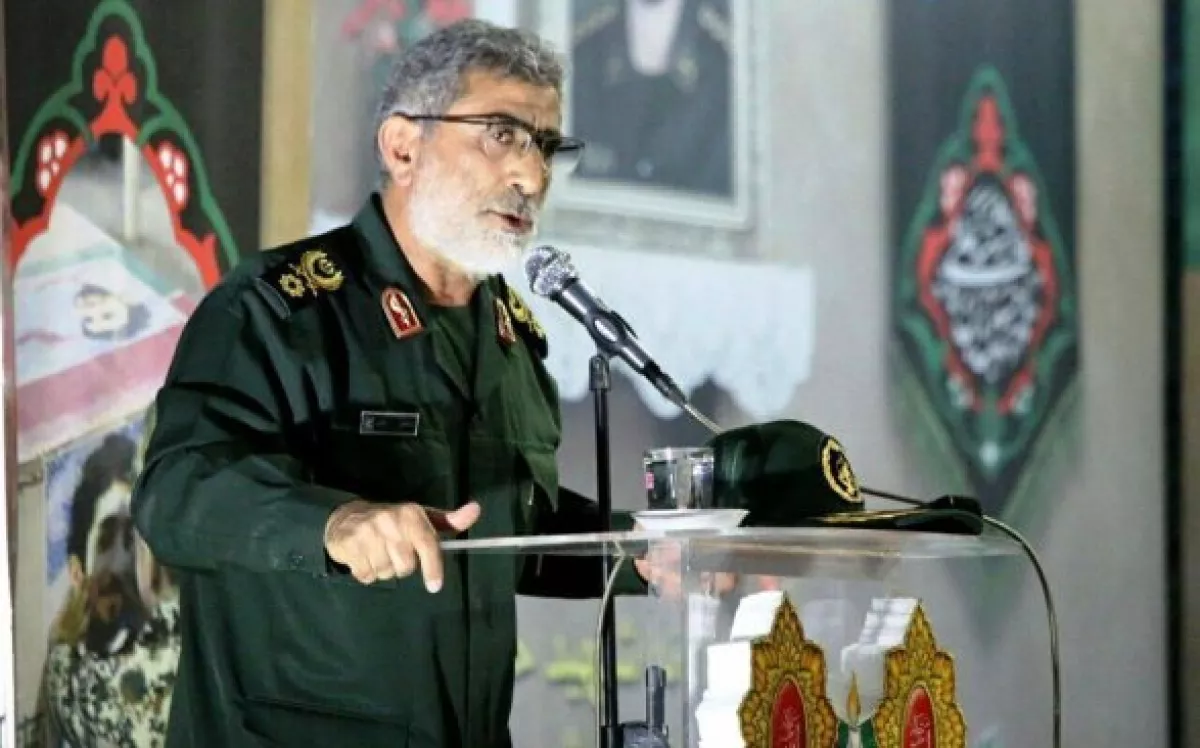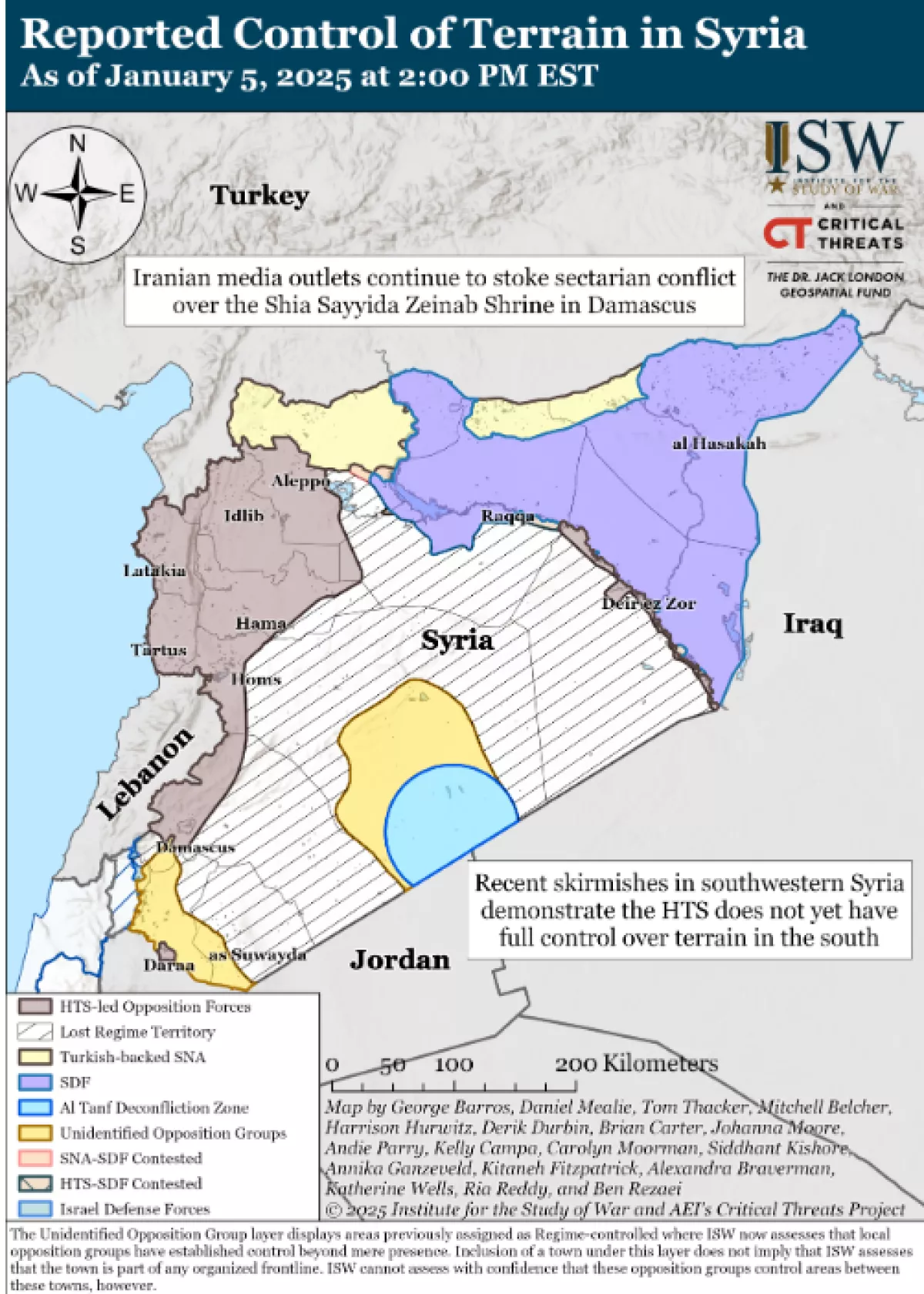ISW: Iran takes steps to prevent instability in Iraq following Assad regime's collapse
Iran is likely taking a series of measures to prevent instability in Iraq in the aftermath of the fall of the Assad regime in Syria.
A report by the Institute for the Study of War (ISW) highlights the involvement of high-ranking Iranian officials, including Ismail Ghani, commander of the Quds Force of the Islamic Revolutionary Guard Corps (IRGC), who arrived in Baghdad on January 5 for secret meetings with senior Iraqi officials and militia commanders to discuss "restructuring," Caliber.Az informs.

Sources close to the situation informed Iraqi media that Ghani is expected to meet with Iraqi Prime Minister, leaders of the Popular Mobilization Forces (PMF), and the Iraqi Armed Forces commander to discuss security measures. The collapse of the Assad regime and its potential implications on regional stability are expected to be central topics of these meetings.
ISW analysts believe that many militia elements, which had previously been stationed in Syria, will likely need to undergo reorganization in light of recent developments. The IRGC has already conducted military exercises in western Iran’s Kermanshah province, while several Iranian brigades have been deployed along the western border to counter potential threats from hostile groups attempting to destabilize the region. This strategic positioning underscores Iran's concern over the security vacuum in Iraq.

In a separate report, IRGC-linked media outlets expressed Iran's growing apprehensions following the collapse of the Syrian regime. They warned that the political instability in Syria could spill over into Iraq, with terrorist groups potentially targeting key Iraqi officials to destabilize the country further. Salman al-Maliki of Tasnim news claimed that the United States and Israel could exploit the power vacuum in Iraq for their own interests.
Iran has consistently blamed the U.S. and Israel for the rise of the Islamic State (ISIS) in both Iraq and Syria and may view attacks against Iraqi military officers and officials by ISIS as being encouraged by these external powers. Al-Maliki also alluded to potential Israeli or U.S. retaliatory strikes against militia targets in the event of future attacks on Israeli or American bases in the region.

In light of these developments, al-Maliki has called for the creation of a joint political and military council in Iraq to address these security threats, exchange intelligence, and respond to terrorism more effectively.
Additionally, Iranian media continue to stoke sectarian tensions over the Shiite holy site of Sayyid Zaynab in Damascus. A report by Tabnak on January 4 claimed that a commander affiliated with Hay'at Tahrir al-Sham (HTS) entered the Sayyid Zaynab shrine and made provocative sectarian remarks. This incident has raised concerns of potential violent reprisals from Shiite and Alawite factions in Syria.
The Syrian Popular Resistance, allegedly a Syrian Telegram channel, accused the new Syrian government of killing six workers at the Sayyid Zaynab shrine on January 5, although it provided no evidence to support the claim. This marks the first time the channel has addressed the Sayyid Zaynab shrine, which is typically a focus of Iranian media outlets.
Key takeaways:
- Iran's regional policy: Iran is taking proactive steps to prevent instability in Iraq following the collapse of the Assad regime. Ismail Ghani of the IRGC’s Quds Force visited Baghdad to discuss military and political restructuring with Iraqi leaders.
- Iranian media influence: Iranian media continue to fuel sectarian tensions surrounding the Shiite shrine of Sayyid Zaynab in Damascus, potentially exacerbating the sectarian divide in the region.
- Strategic goals: Iran aims to restore land corridors connecting Syria and Lebanon, while reinforcing its influence in Syria and Iraq.
This situation illustrates Iran's growing concerns over regional stability and its ongoing efforts to maintain influence in both Iraq and Syria amidst the shifting dynamics in the Middle East.
By Khagan Isayev








